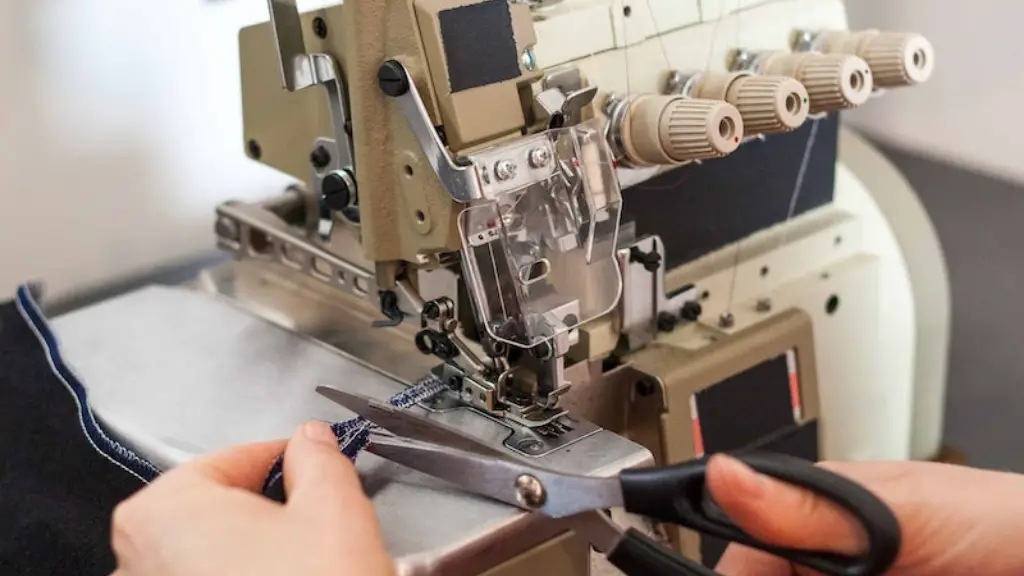< p>Sewing machines are an amazing way to create wonderful pieces of fabric like curtains, clothing, accessories and more. But, without understanding how to adjust the tension on your sewing machine, you can be left with products that are not of sound quality. Therefore, it’s important to understand how to adjust your thread tension in an orderly manner. p>
< p>The thread tension of your machine is important because it helps ensure even stitches with the same amount of thread on both sides of the seam. To measure the tension, pinch the end of the sewn test fabric. You should be able to move the top and bottom sides of the fabric away from each other. If the sewn parts start to come apart easily or the stitches look loose, that means the tension is too low. If the sewn parts don’t budge and the stitches are tight, you know that the tension is too high. The aim is to get those parts to move away from each other but with a bit of resistance. p>
< p>Adjusting the tension can be done on the front of your sewing machine. Different models may have a tension control screw or a dial to adjust the tension. To compensate for the loosening thread tension, you will want to turn the tension dial in a clockwise direction. For higher thread tension dial or screw, turn it in a counter-clockwise direction until the tension reaches a comfortable level of tightness. p>
< p>Most machines also come with a tension control manual that users can reference to know the optimal tension to adjust their machine to. Additionally, ensuring you are using the correct needle and thread can also help in adjusting tension on your sewing machine. p>
< h2>Testing the Tension h2>
< p>Once you make the adjustments, it’s good practice to test the tension once more by using the test fabric as mentioned earlier. However, a more accurate way to test your tension is to make a longer test fabric run instead of a single sewing line. Sewing a few inches of fabric should be enough to clearly adjust tension. p>
Test Different Materials h2>
< p>The tension for all fabrics may not be the same, depending on the type of fibres used in creating the fabric. For instance, lightweight fabrics may require loose tension and thicker fabrics need more tight tension. To test the tension, you should use the same technique as mentioned before but with different kind of fabrics. This will help you to create tension adjustments accordingly. p>
Check Accessories h2>
< p>An old or worn-out bobbin can also cause tension issues or skipping stitches. In some cases, the bobbin is not wound correctly, thus leading to tension issues. To solve this, clean the bobbin and its holder or replace the bobbin case and bobbin altogether. p>
< h2>Check the Thread Path h2>
< p>If all else fails, you may need to check the thread path. Improper threading can create tension issues. Trace the thread from the spool to the needle to make sure it passes smoothly from one point to the next. If you find that the thread is not passing through the guides and take-up lever, retrace steps and guide the thread properly. p>
Thread Jamming h2>
< p>An old or worn-out bobbin can also cause tension issues or skipping stitches. In some cases, the bobbin is not wound correctly, thus leading to tension issues. To solve this, clean the bobbin and its holder or replace the bobbin case and bobbin altogether. p>
< h2>Check the Thread Path h2>
< p>If all else fails, you may need to check the thread path. Improper threading can create tension issues. Trace the thread from the spool to the needle to make sure it passes smoothly from one point to the next. If you find that the thread is not passing through the guides and take-up lever, retrace steps and guide the thread properly. p>
Thread Jamming h2>
Sometimes, adjusting the tension isn’t enough, and you may have to deal with the issue of tension jamming, which is the intertwined bunched up mess of thread left behind from the machine. When this happens, it can prevent you from being able to move the fabric at all. To correct this issue, unplug the machine then gently cut away the jammed threads. p>
Pay Attention to Thread and Needle Size h2>
The size of the thread and needle usually depend on the type of fabric used. You should refer to the manual of the sewing machine, as a way to get guidance on the ideal thread size and needle size for the fabric. Use a thread size that’s too heavy or the wrong needle size, and it can lead to tension issues. Make sure to adjust the tension correctly based on the size.
Adjust the Upper Thread Tension
Apart from tension at the bobbin, you will also need to adjust the upper thread tension as well. Follow the same technique as mentioned for the bobbin tension, in which you should be able to move the top and bottom sides of the fabric away from each other. The aim is to have some resistance, so if the fabric is too easy to move, the tension may be too low and if it doesn’t budge and the stitches are tight, the tension is too high.
Replace the Needle and Thread Regularly
It’s recommended to replace the needle and thread of your machine regularly. When an old and blunt needle is in use, it may result in lower tension. Old and worn-out threads may also cause tension issues if they held together. If already set tension is correct and you’re still getting an issue, replacing the needle and thread should solve the problem.

